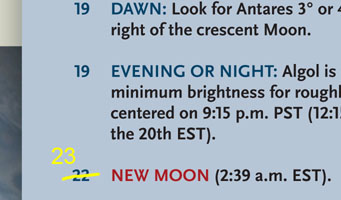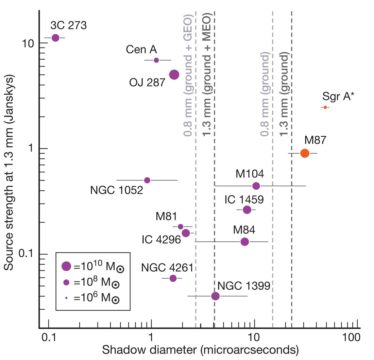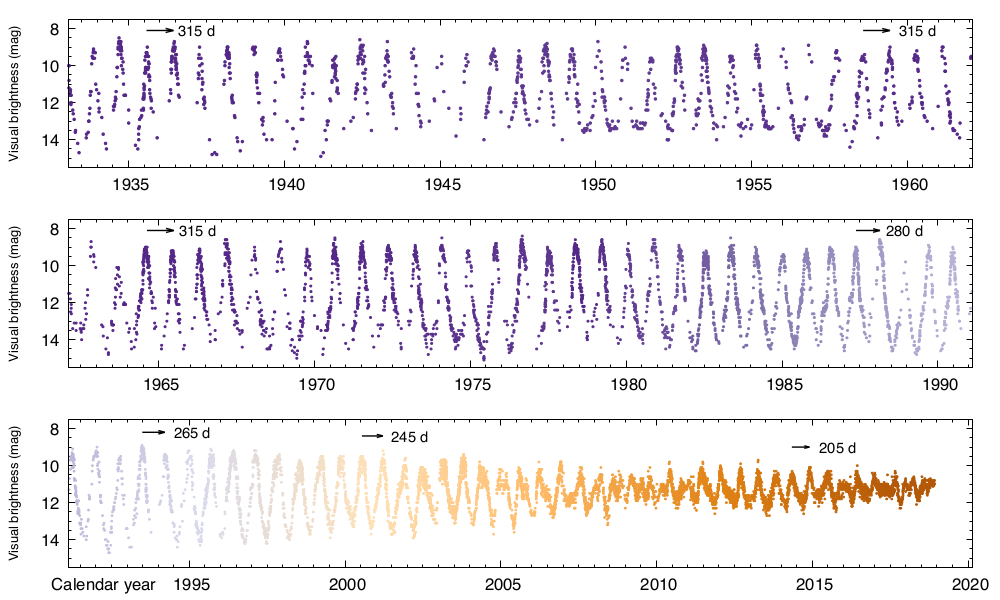 The editors of Sky & Telescope make every effort to provide accurate information, but errors do sometimes slip through. We correct all mistakes online as well as printing corrections in the magazine. So if you see something questionable in the magazine, check below to see if it's a known problem.
The editors of Sky & Telescope make every effort to provide accurate information, but errors do sometimes slip through. We correct all mistakes online as well as printing corrections in the magazine. So if you see something questionable in the magazine, check below to see if it's a known problem.
This article lists all known errors in issues of Sky & Telescope for 2019. See also the errata listings for other years.
January 2019
Skygazer's Almanac: On the 40° north version, the hours from 5:00 p.m. to midnight on the timeline should be labeled “Evening.”
Page 19: The British Isles were inadvertently left out of the map.
Page 21: In the table, the total eclipse ends at 12:44 a.m. (not p.m.) EST.
Page 54: The caption for the photo of M34 should read: “. . . M34 lies about halfway between the stars Beta (β) Persei and Gamma (γ) Andromedae.”
Page 76: The nebula CTB-1 is 36 arcminutes (not arcseconds) in diameter.
February 2019
Page 12: Dawn was not NASA’s first deep-space mission to use ion propulsion. That distinction belongs to the agency’s Deep Space 1 mission, launched in October 1998.
Page 39: The illustration credit should read: “Graph: S&T / Source: John Isles”.
March 2019
Page 16: John Goodricke identified Delta Cephei’s periodic pulsations in 1784, not 1794.
April 2019
Page 43: M44, the Beehive Cluster (592 light-years), should have been included in the discussion of best and brightest star clusters for binocular observing.
May 2019
Page 16: Regarding the caption titled “The North Pole”: While Juno was the first spacecraft to image Jupiter's poles, other spacecraft have come close to its polar perspective. Ulysses flew on a solar polar orbit, so it too flew over Jupiter’s poles, though at a greater distance and without a camera. The Pioneer mission also flew by, but at a more oblique angle that prevented seeing the poles themselves.
Page 69: The second and third sentences in the first full paragraph should be this single sentence: “On the other hand, Keck observations reveal that another newly discovered galaxy near NGC 1052, DF2, contains almost no dark matter at all, in spite of having a huge population of ultra-luminous globular clusters."
June 2019
Page 41: In the Sky at a Glance entry for June 30th, Aldebaran is 3° from the waning, not the waxing, lunar crescent.
July 2019
Page 22: The Moon in the composite image is waxing, not waning.
Page 47: Earth's distance from the Sun at aphelion is 1.0168 (not 1.1068) astronomical units.
Page 63: The end of the sentence on the Equal Rights Amendment under 1976 should read in full: “. . . by all but three of the 38 states required for ratification.”
August 2019
Page 50: The sentence about Jupiter's change in brightness should read " . . . diminishes to a still luminous –2.2 by the end of the month."
September 2019

Page 23: Two labels in the graph of potentially resolvable supermassive black hole silhouettes were inadvertently duplicated. The labels on the left-most dotted vertical lines should read, “0.8 mm (ground+GEO)” and “1.3 mm (ground+MEO)”. See the revised graph at right.
page 53: When Venus was seen and sketched with spots on April 17, 1940, it was near greatest eastern elongation, not superior conjunction.
October 2019
Page 17: In “The Great Attractor”, Sandra Faber (not Donald Lynden-Bell) led “The Seven Samurai” research team.
Page 32: The caption for the image of Messier should have stated that 158 million years is the cluster’s estimated age; its distance is about 5,000 light-years.
November 2019

Page 24: The scale corresponding to Zeta Andromedae's surface temperature should have shown dark shades as the coolest and light shades the hottest.
Page 48: The table "Transit Timetable" correctly lists the event's midpoint as 15:20 UT; all of the time-zone-specific midpoints listed below it should also end in :20.
Page 60: The correct the Trumpler classification for King 10 is II1m.
December 2019

Page 10: Date labels in the light curve of T Ursae Majoris aren't quite correct.
Page 60: Regarding the rate of growth of human knowledge, a doubling every five years is considered exponential growth.
 0
0

Comments
You must be logged in to post a comment.